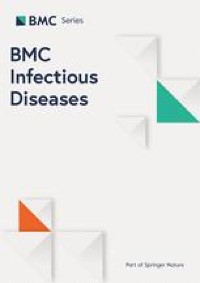Routine use of 16S rRNA PCR and subsequent sequencing from blood samples in septic shock: about two case reports of Capnocytophaga canimorsus infection in immunocompetent patients - BMC Infectious Diseases - BMC Infectious Diseases

Case # 1
A 53-year-old man presented to the emergency department (ED) with fever, diarrhea and abdominal pain. His medical history included meningitis at 3 years old, amebiasis and alcohol consumption without cirrhosis. Physical examination at admission was remarkable for fever (40 °C core temperature), low blood pressure (88/55 mmHg), tachycardia (140 bpm), upper right abdominal pain, marbling and fulminant purpura with petechial bleeding and necrotic toes. Abdominal CT scan performed at admission was normal. The first laboratory results evidenced compensated metabolic acidosis (pH: 7.44; PaCO2: 24 mmHg; base excess: − 7 mmol/L) with hyperlactatemia (6.1 mmol/L), acute renal failure (serum creatinine: 149 µmol/L) and rhabdomyolysis (CK: 7600 UI/L), leukopenia (3.96 G/L) with lymphopenia (0.15 G/L), and thrombocytopenia (27 G/L) together with a low prothrombin ratio (48%), confirming a DIC. Blood cultures were drawn (aerobic and anaerobic bottles) and incubated using the BacT/ALERT3D System (bioMérieux, Craponne, France).
Septic shock was diagnosed and the patient was transferred to the intensive care unit (ICU). Transthoracic echocardiography showed a septic cardiomyopathy with biventricular dysfunction (left ventricular ejection fraction = 20%). The hemodynamic condition of the patient deteriorated despite resuscitation with 2 L of saline and vasopressors were started with norepinephrine (NE) up to 0.8 µg/kg/min and dobutamine at 5 µg/kg/min. In the absence of obvious source of infection, empirical antibiotic treatment was initiated early with ceftriaxone, clindamycin and metronidazole. In the absence of positivity of the blood cultures after 48 h, a 16S rRNA PCR was performed on a blood sample obtained at admission and used for complete blood count. Total DNA was extracted from the EDTA vial using the SaMag-12® automaton (Sacace Biotechnologies). A SYBR-green qualitative PCR on SmartCycler® (Cepheid) targeting a part of the 16S rRNA gene was applied to the DNA extract using the 91E and the 13BS primers yielding a 492-bp fragment [9]. This sequence targets the V3-V4 region of the 16SrRNA that enables adequate differentiation for identification and can provide a bigger percent difference between strains than the entire 16S sequence [10]. 16S rRNA PCR amplicons were purified and sequenced on the 3500 XL (Applied Biosystem) Sanger sequencer. Sequences were compared with the GenBank database using the BLASTN analysis leading to the identification of C. canimorsus with a 100% identity score. Bacterial identification was obtained 4 days after admission. The antibiotic treatment was adjusted to ceftriaxone alone for a total of 14 days. Blood cultures remained negative after the 5-day incubation. The patient slowly improved and was weaned off NE at day 2. The main sequela was a distal dry gangrene of multiple toes and the patient was transferred to a rehabilitation unit after 25 days of hospital stay. Afterwards, the patient recalled a dog bite 2 days before hospitalization with a punctiform necrotic wound localized on a finger and which was not obvious at admission.
Case # 2
A 38-year-old man presented to the ED with confusion, emesis and abdominal pain in a context of acute alcohol intoxication for 3 days. He had no past medical history. At admission he had an unstable hemodynamic status with tachycardia (130 bpm), low blood pressure (90/53 mmHg), lower limbs and abdominal marbling, and extensive purpura fulminans. He also presented mild hypothermia (36.4 °C), polypnea (respiratory rate at 40/min) and desaturation (86% under 15 L/min of O2 with bag mask). The patient reported a dog bite 2 days before admission. Laboratory results evidenced a partially compensated metabolic acidosis (pH: 7.22; PaCO2: 17 mmHg; base excess: − 18 mmol/L), very severe hyperlactatemia (18 mmol/L), hyperleukocytosis (20 G/L) without lymphopenia, DIC with thrombocytopenia (7 G/L) and low prothrombin time (53%), and acute renal failure (serum creatinine: 354 µmol/L). Septic shock with purpura fulminans was diagnosed and the patient received 2 L of fluid resuscitation and empirical antibiotic therapy with ceftriaxone, gentamicin and metronidazole before being transferred to the ICU. Considering the rapid deterioration of his general status, the patient was intubated and mechanically ventilated. His hemodynamic condition deteriorated and required up to 0.24 µg/kg/min of NE. In the context of septic shock with purpura fulminans, DIC and recent dog bite, the diagnosis of C. canimorsus septic shock was suspected. In this context, a 16S rRNA PCR coupled to a Sanger sequencing (same protocol as in case#1) was performed on the blood sample obtained at admission and confirmed C. canimorsus within 36 h of admission. Accordingly, Ceftriaxone alone was infused for a total of 10 days. Blood cultures became positive 5 days after admission and yielded a C. canimorsus strain. An antibiotic susceptibility test was performed. The result was only obtained after the initiation of the treatment and the ongoing antibiotic therapy was continued. NE was weaned after 2 days. Because of a kidney failure, the patient needed renal replacement therapy and was transferred to the nephrology department after 25 days of ICU stay and discharged home after 54 days of hospitalization. The main sequela was a distal dry gangrene of multiple toes.



Comments
Post a Comment